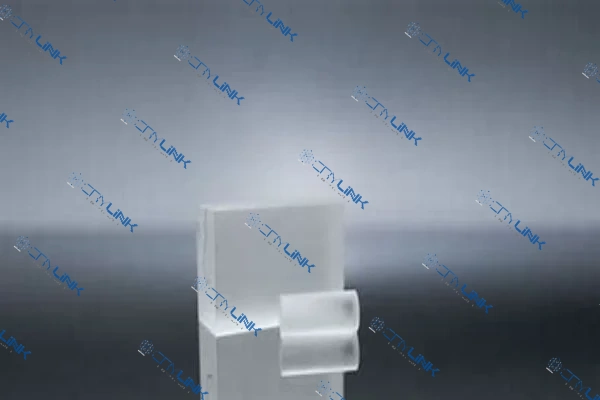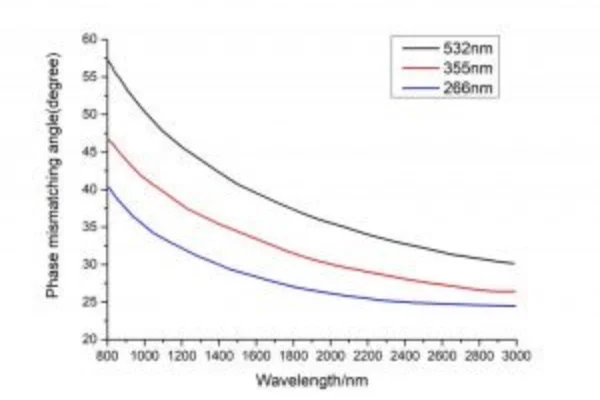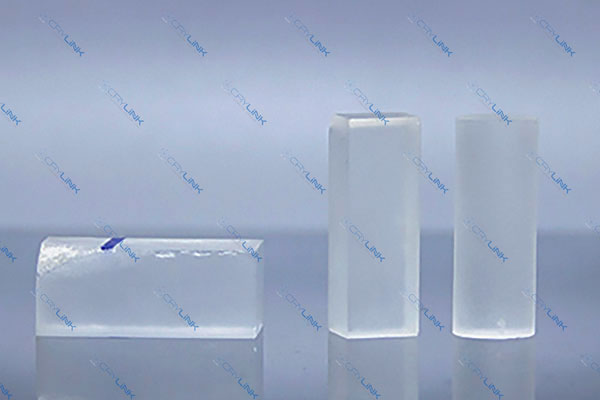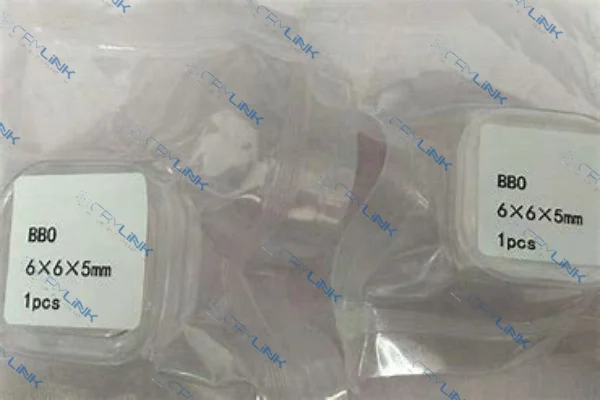Introduction
Beta Barium Borate (BBO) crystals have been a topic of interest in the field of optics and photonics due to their unique properties. In this article, we aim to answer ten common questions about BBO crystals, providing a comprehensive understanding of this fascinating material.
What are BBO Crystals?
BBO crystals, or Beta-Barium Borate crystals, are a type of non-linear optical crystal. They are known for their wide transparency range, high damage threshold, and excellent non-linear optical properties, making them ideal for frequency conversion applications. These crystals are unique because of their ability to alter the frequency of light passing through them, a property that is highly sought after in various fields such as laser technology and quantum physics. The versatility of BBO crystals makes them a crucial component in many advanced optical systems.

How are BBO Crystals Made?
BBO crystals are grown using the flux method, a process that involves melting raw materials at high temperatures. The molten material is then slowly cooled to form a crystal. This process requires precise control of temperature and cooling rate to ensure the crystal’s quality and integrity. The raw materials, usually a mixture of barium carbonate and boric acid, are placed in a platinum crucible and heated until they melt. The temperature is then gradually reduced, allowing the BBO crystal to form over several weeks. The crystal is then extracted, cut into the desired shape, and polished to achieve a high-quality optical surface.
What are the Unique Properties of BBO Crystals?
BBO crystals exhibit several unique properties. They have a wide transparency range, from the ultraviolet to the near-infrared spectrum. They also have a high damage threshold, making them resistant to laser-induced damage. Additionally, BBO crystals have excellent thermal stability, maintaining their properties even at high temperatures. These properties make BBO crystals highly desirable in various applications, from laser frequency conversion to electro-optic modulation. Their wide transparency range allows them to work with a broad range of laser wavelengths, while their high damage threshold ensures they can handle high-power laser beams without degradation.

What are BBO Crystals Used For?
BBO crystals are widely used in the field of optics and photonics. Their primary application is in frequency conversion of lasers, such as second harmonic generation (SHG), third harmonic generation (THG), and optical parametric oscillation (OPO). They are also used in electro-optic modulation and quantum optics experiments. In frequency conversion, BBO crystals are used to change the color of laser light, enabling the production of a wide range of colors that are not directly accessible from available laser sources. In electro-optic modulation, they are used to control the intensity, phase, polarization, or direction of a laser beam.
How to Handle and Store BBO Crystals?
BBO crystals should be handled with care to avoid scratching or damaging their surfaces. They should be stored in a dry, cool place and kept away from direct sunlight. Regular cleaning with a soft cloth or air blower is recommended to maintain their optical performance. When handling BBO crystals, it’s important to use gloves to prevent oils from the skin from contaminating the crystal surface. Any contamination can degrade the optical performance of the crystal and potentially cause damage under high laser power. When storing BBO crystals, they should be placed in a protective case to prevent physical damage and dust accumulation.

Can BBO Crystals be Customized?
Yes, BBO crystals can be customized according to specific requirements. This includes custom sizes, shapes, and coatings. However, customization may affect the crystal’s properties and performance, so it should be done by a professional. Custom sizes and shapes can be cut from a larger BBO crystal to fit specific applications. Custom coatings can be applied to the crystal surfaces to enhance their performance at specific wavelengths or to protect the crystal from environmental factors. However, it’s important to note that any customization should be done carefully to avoid degrading the crystal’s optical properties.

How to Clean BBO Crystals?
BBO crystals can be cleaned using a soft cloth or air blower. For stubborn stains, a mild detergent or isopropyl alcohol can be used. It’s important to avoid using abrasive materials that could scratch the crystal’s surface. When cleaning BBO crystals, it’s important to use a gentle, circular motion to avoid scratching the surface. Any scratches can degrade the optical performance of the crystal and potentially cause damage under high laser power. For stubborn stains, a solution of mild detergent or isopropyl alcohol can be gently applied to the crystal surface and then rinsed off with distilled water.
What Factors Affect the Performance of BBO Crystals?
Several factors can affect the performance of BBO crystals. These include temperature, humidity, and the quality of the incident light. Proper handling and storage can help maintain the crystal’s performance. Temperature can affect the phase-matching conditions of BBO crystals, which in turn affects their efficiency in frequency conversion applications. Humidity can cause water absorption on the crystal surface, which can degrade its optical performance. The quality of the incident light, including its wavelength, intensity, and polarization, can also affect the performance of BBO crystals in various applications.
How Long do BBO Crystals Last?
With proper care and handling, BBO crystals can last for many years. However, their lifespan can be shortened by factors such as high temperature, humidity, and physical damage. BBO crystals are robust and durable, but like any optical component, they can degrade over time if not properly cared for. Regular cleaning and proper storage can help extend the lifespan of BBO crystals. It’s also important to avoid exposing the crystals to conditions outside their specified operating range, as this can cause permanent damage.
Where to Buy BBO Crystals?
BBO crystals can be purchased from various suppliers specializing in optical materials. It’s important to choose a reputable supplier to ensure the quality of the crystals. When choosing a supplier, consider factors such as the supplier’s experience, product quality, customer service, and pricing. It’s also a good idea to ask for a sample or a test report to verify the quality of the crystals before making a purchase.

Conclusion
BBO crystals, with their unique properties and wide range of applications, have become a cornerstone in the field of optics and photonics. These crystals, known for their wide transparency range, high damage threshold, and excellent non-linear optical properties, have revolutionized the way we manipulate light, opening up new possibilities in various scientific and technological fields.
The ability of BBO crystals to alter the frequency of light has made them indispensable in laser technology. They have enabled the production of a broad spectrum of light colors, far beyond what is directly accessible from available laser sources. This has not only expanded the capabilities of existing technologies but has also paved the way for new innovations.
In addition to their use in laser frequency conversion, BBO crystals have found applications in electro-optic modulation and quantum optics experiments. Their high damage threshold and excellent thermal stability make them suitable for use in high-power laser systems, while their wide transparency range allows them to work with a broad range of laser wavelengths.
However, to fully utilize the potential of BBO crystals, it is crucial to understand their properties and how to handle and store them properly. These crystals require careful handling to prevent damage to their surfaces and should be stored in a dry, cool place to maintain their optical performance. Regular cleaning and proper storage can help extend the lifespan of BBO crystals, ensuring their continued contribution to the field of optics and photonics.
In conclusion, BBO crystals are a fascinating and versatile material that has significantly advanced the field of optics and photonics. By understanding their properties and how to handle them, we can continue to harness their potential and drive further advancements in optical technology. Whether it’s in the development of more efficient lasers, the exploration of quantum phenomena, or the creation of new optical devices, BBO crystals will undoubtedly continue to play a pivotal role.
FAQs
- Q1: Can BBO crystals be used in high-power laser systems?
- A1: Yes, BBO crystals have a high damage threshold, making them suitable for high-power laser systems. Their ability to withstand high laser intensities without suffering from optical damage makes them an excellent choice for frequency conversion in high-power lasers. However, it’s important to note that while BBO crystals can handle high power, they should still be used within their specified power range to prevent potential damage and ensure optimal performance.
- Q2: Are BBO crystals sensitive to humidity?
- A2: Yes, prolonged exposure to humidity can degrade the optical performance of BBO crystals. Humidity can lead to water absorption on the crystal surface, which can affect its optical properties. To prevent this, BBO crystals should be stored in a dry environment and properly sealed when not in use. Additionally, any cleaning process should be followed by thorough drying to remove any residual moisture.
- Q3: Can BBO crystals be used in ultraviolet applications?
- A3: Yes, BBO crystals have a wide transparency range that extends into the ultraviolet spectrum. This makes them suitable for applications that require ultraviolet light, such as UV spectroscopy and UV laser systems. However, it’s important to note that while BBO crystals can transmit UV light, they should be handled with care when used in UV applications to prevent potential damage to the crystal and ensure safety.
- Q4: How are BBO crystals different from other non-linear optical crystals?
- A4: BBO crystals are known for their wide transparency range, high damage threshold, and excellent non-linear optical properties, setting them apart from other non-linear optical crystals. Unlike some other non-linear optical crystals, BBO crystals can operate over a wide range of wavelengths, from the ultraviolet to the near-infrared. They also have a high damage threshold, allowing them to handle high-power laser beams without degradation. These unique properties make BBO crystals a versatile tool in various optical applications.
- Q5: Can BBO crystals be used in room temperature?
- A5: Yes, BBO crystals have excellent thermal stability and can maintain their properties at room temperature. This means that they can be used in a wide range of environments without requiring special temperature control. However, while BBO crystals can operate at room temperature, extreme temperatures should still be avoided as they can affect the crystal’s phase-matching conditions and potentially cause damage.

Frank
Frank graduated from the University of Shanghai for Science and Technology, majoring in optics. As a technical engineer at Crylink Company, he deeply understands crystal materials and laser components.
Related Video(s) with this Article
Related Product(s) with this Article
Related Application(s) with this Article
